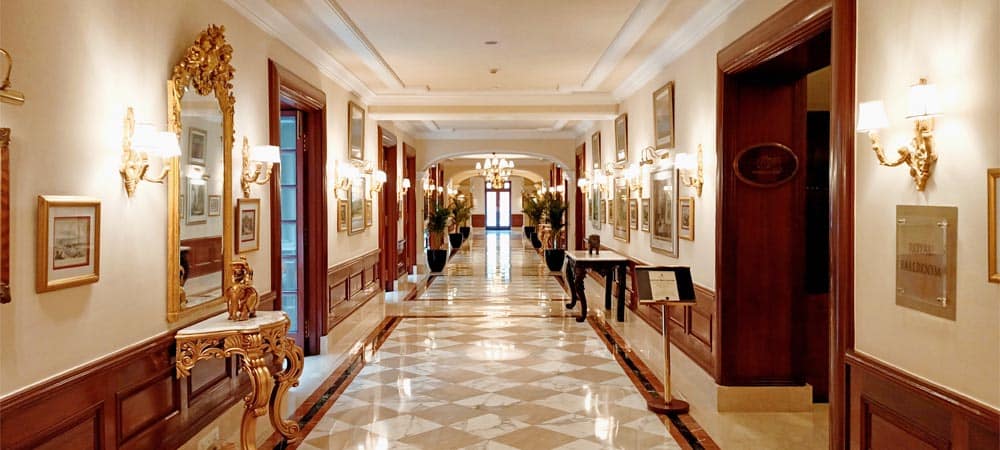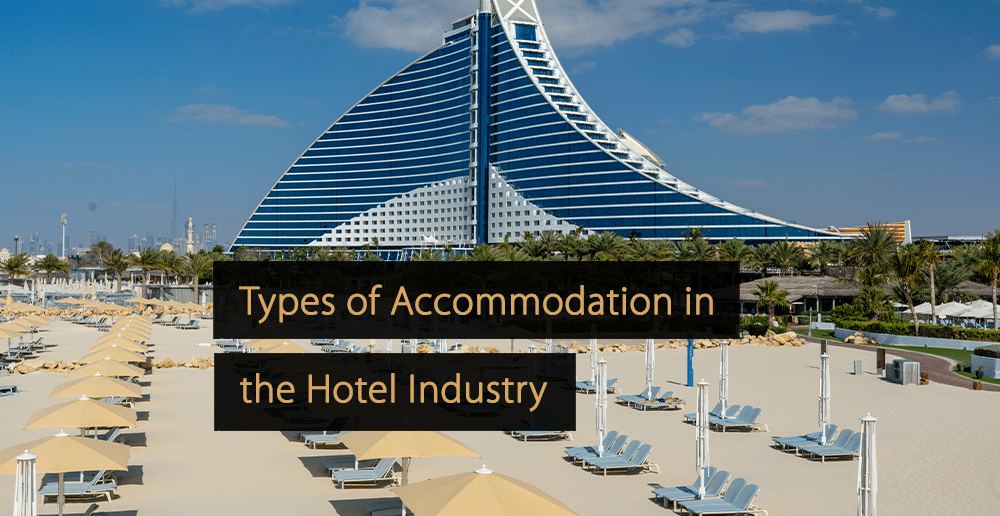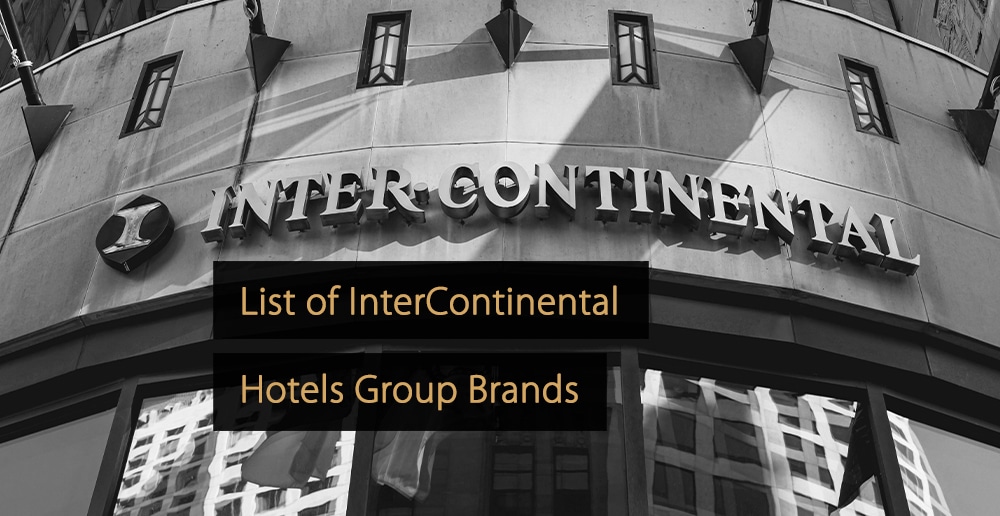Despite what the name may imply, there are many different types of accommodation in the ‘hotel’ industry, with hotels being just one of these. In this article, you can explore the different accommodation types that make up this industry and gain a deeper understanding of how these types differ.
Table of Contents:
- What is the Hotel Industry?
- What is the Difference Between the Hotel and Hospitality Industries?
- The Two Main Accommodation Categories in the Hospitality Industry
- 11 Types of Accommodation in the Hospitality Industry
- Hotel Rating System
- Learn About the Hospitality Industry
- Understanding Hotel Room Types
What is the Hotel Industry?
The hotel industry is the industry surrounding the provision of short-term guest accommodation and related services. While the name suggests it is centered around hotels, it includes many different accommodation types. However, permanent or long-term accommodation is not included under the most widely accepted definition.
In the “Hotel Industry: Everything You Need to Know About Hotels!” article, you can find a complete breakdown of how the industry is defined, the types of accommodation included, and access to useful links to other resources.
What is the Difference Between the Hotel and Hospitality Industries?
Before fully exploring the different types of accommodation in the hotel industry, it is worth examining a topic that sometimes confuses: what is the difference between the hotel industry and the hospitality industry?
Essentially, the main difference is in scope. The hotel industry describes businesses that provide guest accommodation and related services. The hospitality industry is wider in scope, as it includes all of the businesses in the hotel industry, as well as businesses focused on leisure in general. This means the hospitality industry includes restaurants, cafes, bars, nightclubs, travel agencies, and other businesses offering food and beverage services.
The Two Main Accommodation Categories in the Hospitality Industry
In general, all types of accommodation within the hotel or hospitality industry can be divided into two main groups, which are serviced accommodation and non-serviced accommodation:
Serviced Accommodation
Serviced types of accommodation provide guests with various services beyond the provision of a bed. This will typically take the form of hotel-style services, such as housekeeping. Serviced accommodation will also provide food services, including a restaurant, a bar with food offerings, or room service food options.
Non-Serviced Accommodation
Non-serviced accommodation types do not provide additional hotel-style services. They often offer more of a ‘home away from home‘ feel, with guests relying on a greater level of self-service. So, for example, food service will not be included, but there may be kitchen facilities provided so guests can prepare food themselves.
11 Types of Accommodation in the Hospitality Industry
Below, you can learn about 11 of the most common types of accommodation in the hotel and hospitality industries.
1. Hotels
Hotels provide guests a room and access to additional hotel amenities and services, including food, housekeeping, concierge, Wi-Fi, and more. Many hotels will have their own restaurant or bar, and some will also have meeting rooms, sports and leisure facilities, and other services.
Hotels are often broken down based on ‘star ratings‘, which go from 1-star to 5-star. A 1-star hotel will usually provide very basic facilities. In contrast, a 5-star hotel will be a luxury hotel, with high-quality facilities and services, including swimming pools, fitness and spa facilities, butler services, and more.

2. Resorts
Resorts are similar in concept to hotels, but this type of accommodation is designed to function as a self-contained development that can be described as a holiday destination. Within the resort’s grounds, guests can expect entertainment, leisure facilities, shops, and – in many cases – multiple restaurants.
There is usually a greater emphasis on offering live entertainment, and the services staff provide will be more extensive than a typical hotel. Resorts are ideal for guests who want to escape from everyday life and know that all their needs will be catered for in one location.
3. Motels
The word ‘motel’ is short for ‘motor hotel‘, and this helps to provide a basic definition. Motels, more than other types of accommodation, are aimed at motorists. They are typically situated near major roads and along major routes, and rooms are usually accessible directly from the parking lot for maximum convenience.
In the “Motel Meaning: Understanding the Role of Motels in the Industry” article, you can access a comprehensive motel definition, read valuable insights about the history of the motel industry, learn about the current role of motels within hospitality, and explore some of the technology solutions that motel owners are using.
Video: TYPES OF HOTEL: Motel, Flotel, Rotel, Boatel
4. Hostels
Hostels are a form of budget-friendly, shared accommodation, often aimed at specific types of travelers, such as backpackers, gap year travelers, or students. While hotel guests, motel guests, and resort guests will have their own individual rooms, the arrangement in a hostel is usually for multiple people to share the same living space.
In this sense, hostel guests primarily pay for their beds rather than paying for a room like in many types of accommodation. The layout of hostels can vary, but they often use bunk beds to maximize the number of guests they can fit into the main living space. Often, they will provide kitchen facilities for food preparation.
5. Bed and Breakfasts
Bed and breakfasts, or B&Bs, are types of accommodation that offer overnight stays and breakfast in the morning. These properties are usually much smaller than hotels and are often private homes, or converted pubs or inns, where the hosts will also live. B&Bs usually have fewer than 10 rooms, and some have shared bathroom facilities.
The B&B concept is usually intended to provide guests with low-cost accommodation, a homely feel, and a personal touch. Many B&Bs are family-owned and may have additional employees, but the total number of staff will be low. Amenities will also usually be limited, and B&Bs are ideal for short stays or budget-conscious travelers.
Video: 4 Stages of Running a Bed and Breakfast, Guest House or Inn
6. Guest Houses
Guest houses are private homes that have been converted to provide guest accommodation. As with a bed and breakfast, the number of staff on hand to provide services for guests will usually be low, and guest services will be limited. Meals may or may not be included in the price, but wider hotel-style services will not usually be provided.
Often, guests will stay in a guest house alongside their hosts, but the hosts may reside in a separate part of the property to give guests more privacy. Interactions with the hosts may be limited outside of any meals included. Guests are usually expected to keep their rooms clean and be more self-reliant than hotel guests.
7. Holiday Cottages
Holiday cottages are small homes or cottages that are used for short-term guest accommodation. They can be categorized alongside other non-serviced types of accommodation, because guests pay for access to the property for a set period and are responsible for making their own arrangements for food and other needs.
In general, holiday cottages provide guests with a sense of freedom, and the arrangement can feel less formal than hotels. They are especially common in the United States, Canada, the United Kingdom, France, and Australia.
8. Apartments
Apartments or flats are self-contained units, typically with defined kitchens, bedrooms, bathrooms, and living rooms. They resemble ordinary residential apartments but are used for short-term guest accommodation. They are a popular option with families, business travelers, or groups of friends traveling together.
Two different types of accommodation fall under this umbrella. Serviced apartments are managed properties that offer housekeeping services, room service, and other hotel-style services. Conventional apartments are an example of non-serviced accommodation, where guests cannot access hotel facilities or services.
9. Cabins
Cabins can be broadly defined as small, wooden houses or shelters. They are usually associated with rural areas and may also be called huts. Cabins can vary substantially, but most have basic facilities, such as a kitchen, a bathroom, and a main living area. They are good for escaping city life’s hustle and bustle.
A related concept is a log cabin, made entirely from whole or split logs, giving them a simpler structure. Both types of accommodation have similar features aside from their construction. Most cabins are non-serviced, with guests paying for exclusive access to the cabin for a set period of time.
10. Chalets
A chalet is a wooden building resembling a house or cottage with overhanging eaves. Technically, chalets refer to buildings designed with Alpine styling, as the concept originated in Switzerland and France.
Chalets and similar types of accommodation are most commonly associated with popular skiing and hiking destinations. This association is so strong that in many parts of the world, any holiday home-style accommodation regularly used for skiing trips is referred to as a chalet, even if it does not physically resemble Swiss chalets.
11. Boats and ‘Botels’
There are many different types of accommodation related to boats. For instance, it is possible to hire a canal boat, yacht, or other vessel and sleep on it. Alternatively, a houseboat is a boat adapted to primarily serve as accommodation. Houseboats float on water, but typically stay in one place.
A related concept is a ‘botel’, a portmanteau of the words ‘boat’ and ‘hotel’. These are permanently moored boats adapted to provide hotel-style accommodation experiences. The ‘botel’ concept is especially popular in Europe, but has risen in popularity in other parts of the world too.
Hotel Rating System
With hotels and similar types of accommodation, star ratings indicate the quality of the accommodation and the standard of amenities and services provided. However, it is worth gaining a deeper understanding of what each star rating indicates about a property and some other ways to ascertain quality.
In the “The Hotel Star Rating System: Types, Benefits, Significance, Examples” article, you can learn all about hotel star ratings and their significance, explore the history of star ratings in the industry, and find out how star ratings on OTAs differ from the more conventional star ratings associated with hotels.
Learn About the Hospitality Industry
The vast hospitality industry encompasses many types of accommodation, food and beverage businesses, entertainment providers, and travel and tourism companies. This makes it important to define the industry clearly and understand its different sectors and business types.
In the “Hospitality Industry: The No. 1 Hospitality Information Guide!” article, you can read a complete overview of the hospitality industry, its sectors, and the main hospitality trends to be aware of.
Understanding Hotel Room Types
In addition to understanding the different types of accommodation in the hotel industry, it is worth taking some time to learn about the different types of hotel rooms. These types can be based on occupancy levels, such as single rooms and double rooms; based on bed type, such as queen or king room; or based on layout, such as suites or studio rooms.
In the “Types of Hotel Rooms: The Different Hotel Accommodation Types” article, you can take a closer look at the most common hotel room types and find out how they are defined.
The hotel industry may sound like it centers around hotels, but it includes many different types of accommodation. These can be broadly separated into serviced and non-serviced accommodation types. However, even within these sub-categories, the offerings and guest experiences can differ significantly.
More Tips to Grow Your Business
Revfine.com is a knowledge platform for the hospitality & travel industry. Professionals use our insights, strategies and actionable tips to get inspired, optimise revenue, innovate processes and improve customer experience. You can find all hotel & hospitality tips in the categories Revenue Management, Marketing & Distribution, Hotel Operations, Staffing & Career, Technology and Software.This article is written by:
Hi, I am Martijn Barten, founder of Revfine.com. With 20 years of experience in the hospitality industry, I specialize in optimizing revenue by combining revenue management with marketing strategies. I have successfully developed, implemented, and managed revenue management and marketing strategies for individual properties and multi-property portfolios.









Leave A Comment